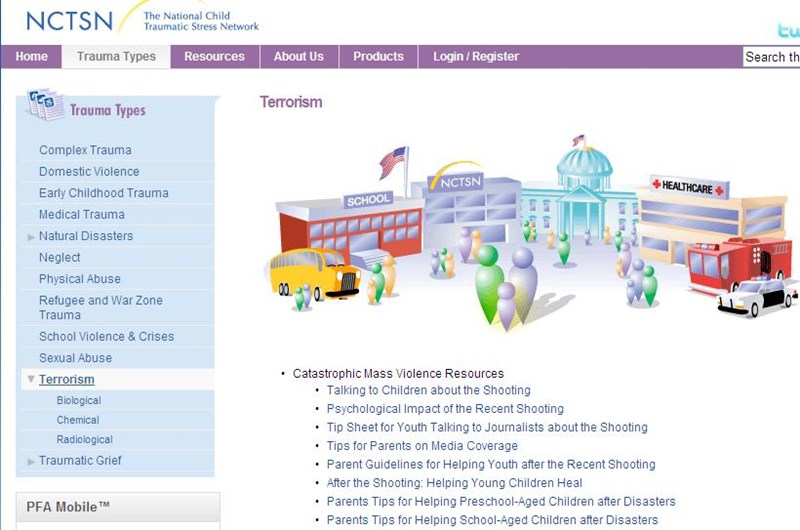Newtown Shooting Response
December 17, 2012 04:58 PM
Questions and preparation:
Questions surrounding an event involving mass violence can be overwhelming, especially when we know that so many innocent lives ended tragically. The echo from this sad event will ring unforgotten. And, while we do not have the answers we are still able to respond. How should one respond after an event of mass violence? As members of a community, we respond with loving kindness and we respond by being present with our clients, colleagues, and the greater community. As professionals, we begin by making sure that we are ready and prepared to provide support for others. Readiness at all levels is critical. We need to be ready emotionally and psychologically; and, we need to be ready to practice within our scope of practice, respecting our level of experience and skill. We must know our limits and practice accordingly.
Re-creation, resiliency and the isoprinciple:
Music therapists, as creative people, know the effort that goes into the creative process. At times like this, following a mass violence event, it seems that the process to create takes so much more energy than the act of destruction. Our work following disaster may involve "re-creation," at several levels, drawing upon the strengths and resiliency in our clients and the community. In and around this re-creation will be a grieving process that we must respect and allow to take place. Not too long ago, while working in an emergency shelter following a disaster, I encountered a gentleman who was a professional musician. We had several interactions surrounding his situation and losses and we often integrated musical terms within our discussions. Over four days I met with this gentleman several times. In order to quickly assess how he was doing, I asked him what key he was feeling. He liked this question and he could relate to it very quickly. During the toughest days following the disaster he told me he was feeling "Bflat minor." He described the key as challenging, dark and brooding, not unlike the disaster he experienced firsthand. In a few days that shifted to F major once he had time to settle, access resources, and resolve some problems around the disaster recovery. For this individual, it was important to recognize and acknowledge "his key" in order to measure his level of disorder, or entropy, and then be able to move forward. Music therapists bring a unique set of skills to our clients and the community after events like the Newtown shooting. We do so drawing upon things like the iso-principle -- and an array of interventions, methods, and techniques -- to re-create a sense of safety and support, and foster resiliency.
Traumatic stress:
The National Center for Child Traumatic Stress (NCTSN) is a joint activity of UCLA and Duke University. The NCTSN devised the Core Curriculum on Childhood Trauma Task Force (2012) containing 12 core concepts, "Concepts for understanding traumatic stress responses in children and families." Details on the concepts are referenced on their website and a link is provided, below.
There are two principles from the NCTSN I wish to highlight. First, "working with trauma-exposed children [and adults] can evoke distress in providers that makes it more difficult for them to provide good care. Proper self-care is vital in order to provide quality music therapy services and avoid burn-out. Second, "protective and promotive factors can reduce the adverse impact of trauma." Protective factors tend to buffer the adverse effects of trauma and promotive factors tend to enhance an individual’s positive adjustment. Promotive and protective factors may be intrinsic or extrinsic to the individual and include things like high self-esteem, adaptive coping skills, a positive attachment with a caregiver, and a supportive social support network. Music therapy experiences can assist in uncovering, creating, and re-creating protective and promotive factors. For more information, see:
http://www.nctsn.org/trauma-types/terrorism

What’s happening?
Since the shooting hit the news, AMTA has been active in indentifying the MTs and music therapy students in the immediate Newtown area. Working with the NER President, Eve Montague, welfare inquiries are in progress and an email exchange began. Numerous professionals in the eastern regions, highly experienced in traumatic stress and disaster response, have generously offered to provide assistance and support. Two conference calls, hosted by AMTA, are scheduled on December 19 and 20 to allow the MTs and students in the affected region to network. AMTA’s initial and primary focus is on supporting the professionals and students affected by this tragedy so they may continue to serve their clients and the community. Therefore, we are assessing needs to identify how we may best support the professionals serving that region.
Thank you to all the music therapy professionals throughout the country responding within their own communities and practices. We know that this event reaches well beyond Newtown and Connecticut since a mass violence event like this reverberates nationwide.
Contact:
If you’ve been directly or indirectly affected by the shooting, please feel free to contact the NER President or Barb Else at AMTA. If you have questions, suggestions, or comments on this event and AMTA’s disaster response program, please contact AMTA directly or Barb Else via the contact information listed below.
Respectfully submitted,
Barb Else
Barbara A. Else, MPA, LCAT, MT-BC
Consultant: Sr. Advisor, Policy and Research
Disaster Response Coordinator
American Music Therapy Assn.
301-589-3300 x114
else@musictherapy.org
Regional contact:
Eve D. Montague, MSM, MT-BC
President, NER-AMTA
e.montague@sscmusic.org
Back